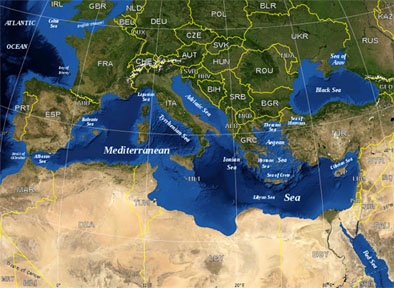Mediterranean Family Size Religious Israeli Jewish Women Win (Lose?)
A great article from our friends at the Berman Jewish Policy Archive!
 Women and Demography in the Mediterranean States (2009), by Ariela Keysar, compiles and analyzes demographic data from Algeria, Egypt, Turkey, Israel, Italy, Greece, Spain, and France.
Women and Demography in the Mediterranean States (2009), by Ariela Keysar, compiles and analyzes demographic data from Algeria, Egypt, Turkey, Israel, Italy, Greece, Spain, and France.
The general results were unsurprising – lower fertility is associated with women’s greater participation in the workplace and educational, civil and social equality. More surprising, however, is that family size has decreased across the board, even in the most religious countries (based on questions about the importance of God and religion in people’s lives).
For example, Morocco has the lowest rate of female literacy and education, and also relatively low female workplace participation, nevertheless saw the average number of children per woman decrease from 6.9 at the beginning of the ’70s to 2.4 in the last couple of years. The highest current fertility rate is in Syria, which is only 3.1.
This data suggests that somehow, contraceptive technology, education, and use, is penetrating even through both political oppression and religious conservatism. Unfortunately, the scope of the article doesn’t include an exploration of the cause and means for this transformation, but it certainly seems encouraging.
The article includes some reflections on Israel:
Israel is a unique example of an advanced country with a modern health system, high educational attainment of women and high level of female labor force participation (Figure 9-8), and yet a high total fertility rate of 2.8. Israeli data are for Jewish women only. DellaPergola showed major differences in fertility patterns by religiosity among Jewish women in Israel. In 2005, the most religious Jewish women had 4.7 children compared with only 1.7 children for secular Jewish women. DellaPergola attributed the large gaps to “powerful differentiation of family norms related to religious norms and religiosity.”
It’s interesting and probably unfortunate that the Israel data only seems to count Jewish women. One advantage of that is that it perhaps offers a clearer picture of the role of religious versus political/civic influences on fertility.
The religious Jewish fertility rate of 4.7 seems incredibly high, considering that no Mediterranean country (but Syria) has a rate over 3. Perhaps in this case, higher levels of women’s health care and achievement actually contribute to a higher fertility rate?
For more insight, explore BJPA’s resources on Jewish fertility and family size.
-Tara Bognar




One comment on “Mediterranean Family Size Religious Israeli Jewish Women Win (Lose?)”
Comments are closed.